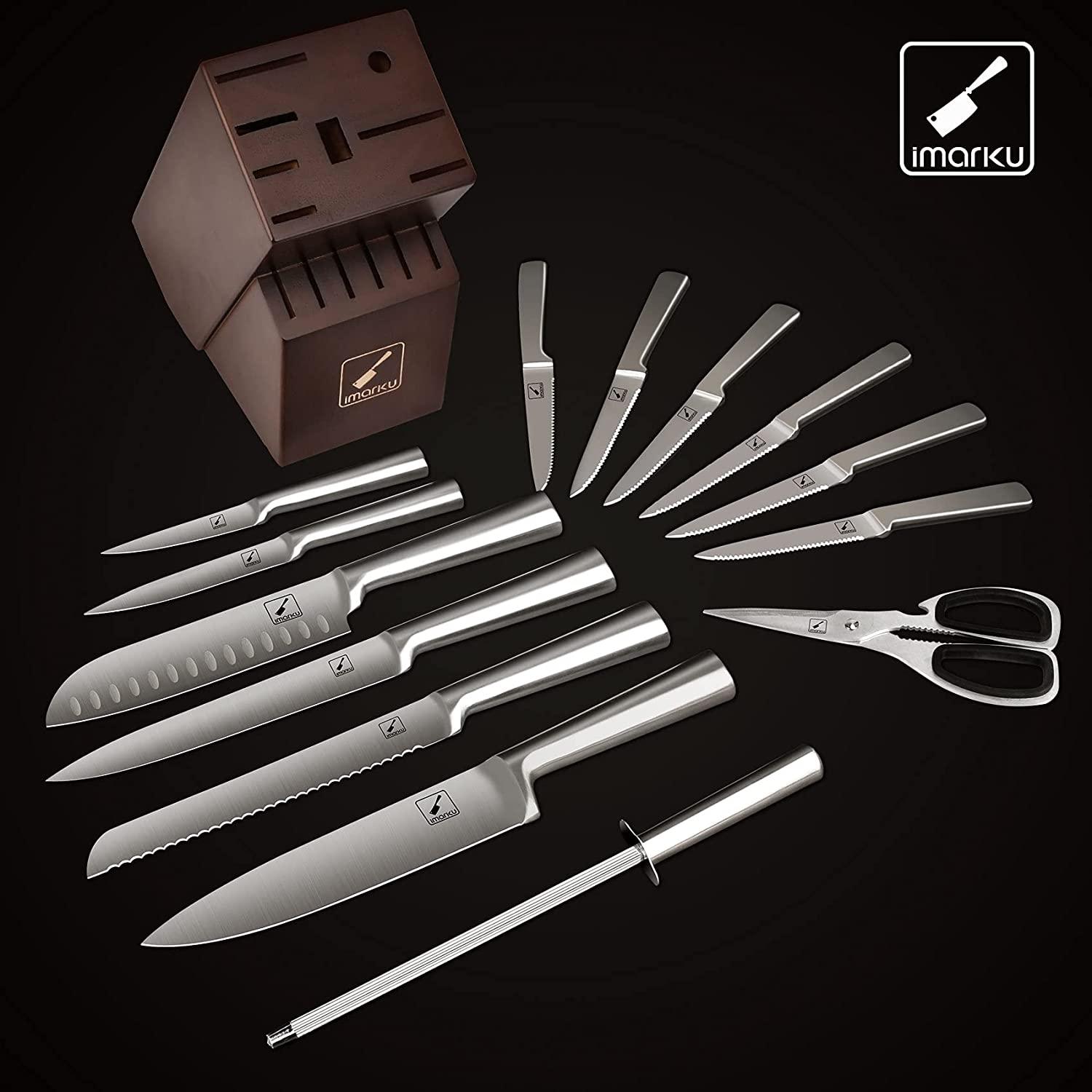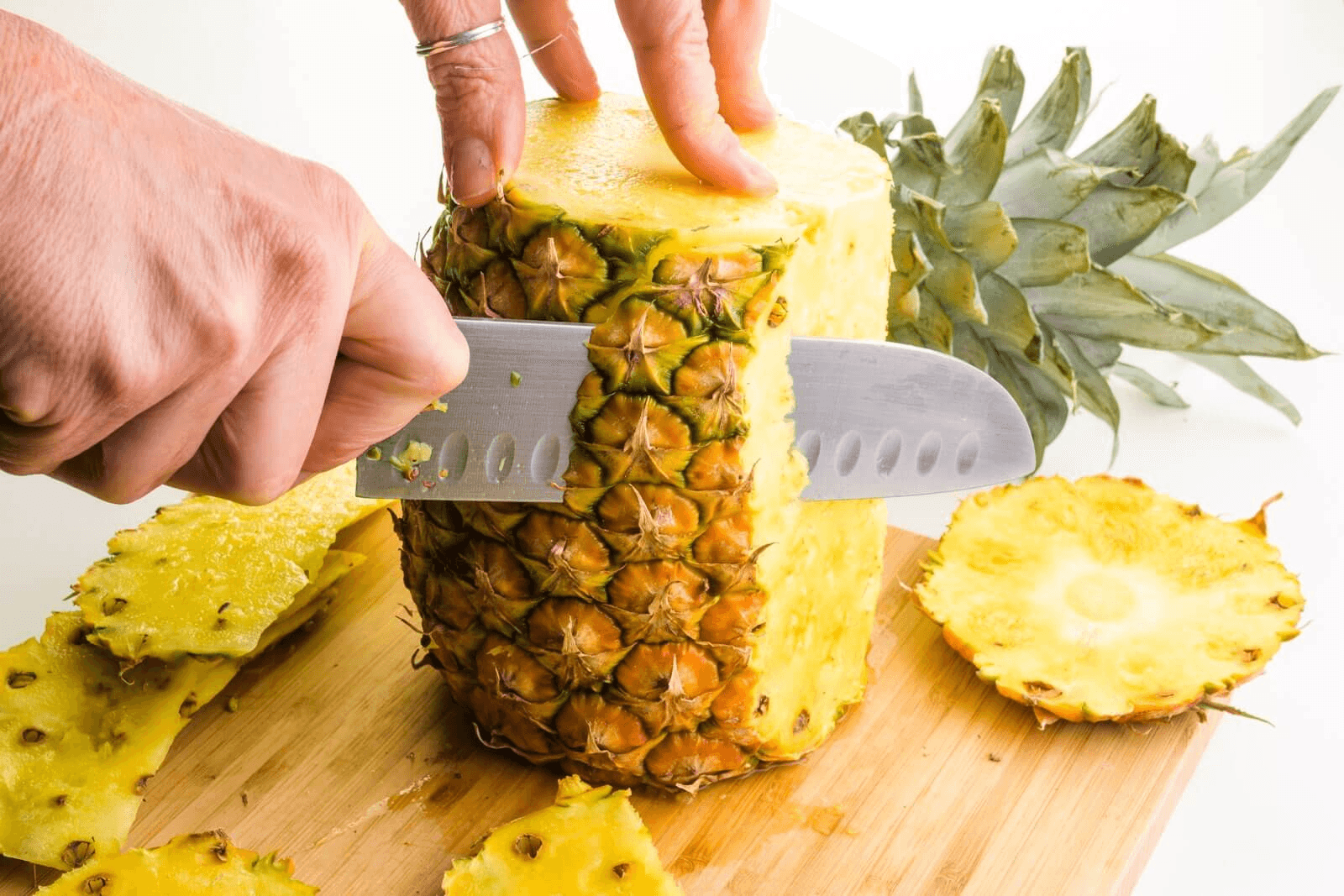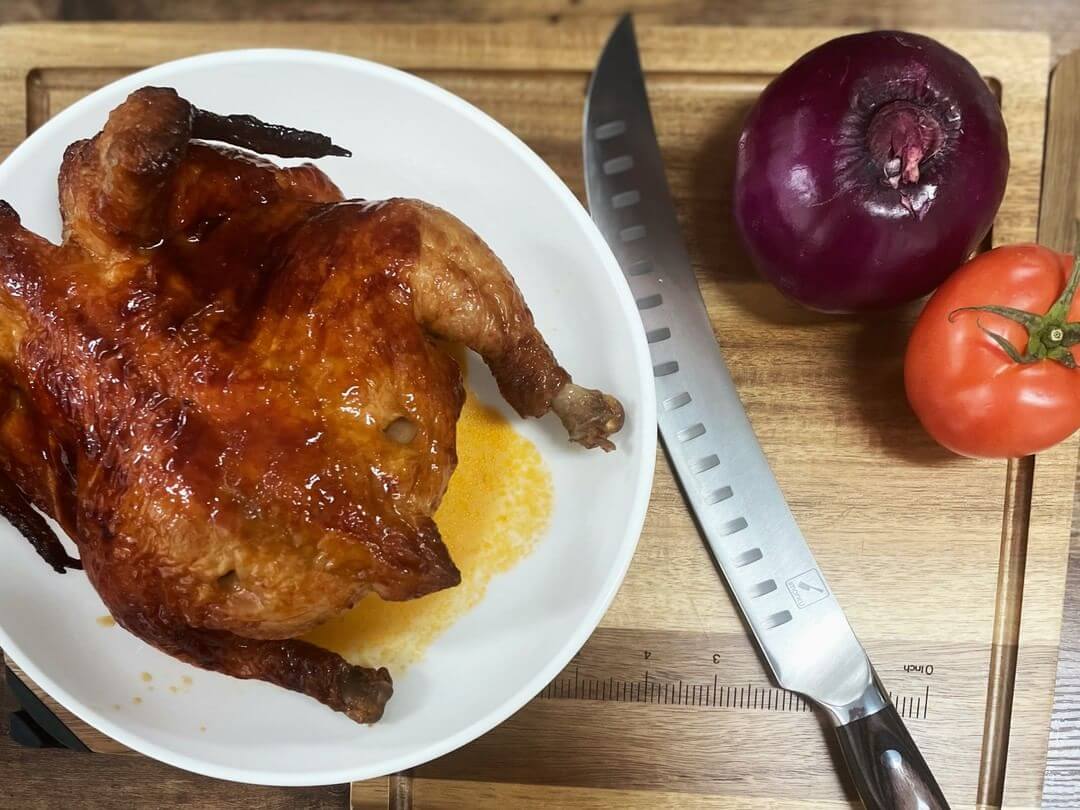TABLE OF CONTENTS
A knife is an essential component of your kitchen cutlery for cutting different ingredients and food. However, a dull knife can be very dangerous and inevitable. When using it, you'll need more pressure, leading to slipping and sliding over your food ingredients. The sliding of your knife makes you lose control over the blade and cut other unintended things, including your fingers. Cuts from a dull knife may be painful and can lead to wounds, which take longer to heal than those from a sharp knife.
It's good to understand that knives won't stay sharp all the time; they lose sharpness after some time. The blades regularly deteriorate in the kitchen due to various factors, making the knife dull. When using your knives, it'll be essential to consider and control all the contributing factors that will help you prolong the sharpness of your blade. It'll be vital to check for the signs of a dull kitchen knife, how to test the knife's sharpness, and reasons they might be blunt. This article provides a comprehensive guideline on everything you need to know about dull kitchen knives.

Top Signs of a Dull Knife
With the harmful effects of a dull kitchen knife, it'll be essential to ensure that you've sharpened your dull knife. But, how will you know that your knife has become dull? Most individuals usually believe that sliding their fingers across the knife's blade is the best way of checking your knifes' sharpness. Apart from this unsafe method, you can use other suitable ways and signs to check or test your knives' sharpness. These ways include:
1. The mushy tomato
While using this method, it'll be good to understand that the tomato's outer surface is tough, whereas it's mushy from the inside. Therefore, to ascertain your knife is sharp, you should easily pierce through the rigid outer surface to the mushy inside without any mess. Therefore, if you realize that your cut results in a mushy mess, your knife is dull. This method helps you determine the dullness of each type of knife despite the knife's initial purposes. The reason being any sharp knife should break and cut the rigid tomato skin more easily, creating even cut slices and intact juices.

2. The slippery onion
If the tomato tests seem challenging, the onion test will offer a better alternative. In this test, you'll use the onion, one of the slick vegetables and sneaky due to its skin nature. When testing the sharpness of your knife using this method, you'll have to cut through the onion. If the cut results in the knife sliding and slipping all over the onion's skin, then you've to conclude that you're using a dull knife. A sharp one should be able to pierce and make the cut once.

3. The cracked pepper
It'll be vital to strictly consider using cracked pepper and not any other type of pepper when using this method. The bell or cracked pepper will make a lot of cracking sound when chopping; this sound will be the determining factor to check the sharpness of your knife. While chopping, if you realize cracking sounds from the rigid cuts, you're using a dull knife. Importantly, when it comes to a sharp knife, you'll realize some enjoyable movements when chopping your cracked pepper.

4. The splitting carrots
You don't require more energy or knowledge to slice your carrots properly, but you only need a sharp knife. The knife will allow you to slice quickly through the carrot pieces without exerting more force. Therefore, when slicing through the carrot and realizing the split reaction halfway, then you definitely should understand you're dealing with a dull knife. In addition, you can also hold your carrot with your non-dominant arm in front of you and use the knife on the dominant one, then chop off your carrot's top in a swift motion. When slicing using a sharp knife, you'll have more ease than using a dull knife.

5. The paper test
It's a super fun testing mode of your knife's sharpness, which involves using a piece of paper and holding it in front of you, ensuring you place it at shoulder height. Then pick your knife using your dominant hand and press its blade downwards towards the paper's edge. For more safety, slice the blade away from yourself. You'll realize a clean slice through the paper using a sharp knife. Nonetheless, a dull knife will either skip along the edge or tear your paper unevenly.

Common Reasons For Having Dull Kitchen knives
After understanding how to tell whether your knives are dull or sharp, it'll be imperative to look at the top reasons they might be blunt. Below are the common reasons why your knives become blunt easily apart from their regular use:
1. Improper storage
The primary cause of your knife getting blunt is storing them improperly. The improper storage of your knives may include throwing them in your cupboard drawer with the other utensils and silverware. The knives will be sliding around in the drawers, thus hitting their delicate, sharp edges, which later results in scratches & nicks and later dull edges. Additionally, this storage puts your safety at risk as you can easily injure your finger while accessing the drawer. Therefore, to save your knife's sharpness and the safety of your fingers, it'll be good to invest in proper storage like the magnetic knife block.
2. Placing them in a dishwasher
Dishwashers are the appropriate appliance to clean food and dirt off your silverware and plates. However, these appliances will do more harm than good to your knives. When in the dishwashers, this cutlery may bang on the other utensils, leaving them with scratches, chips, which results in dullness or bluntness. However, the manufacturer has ways to prevent this, but generally, the dishwashers are harsh environments for your knives.
The heat from the appliance combined with the detergent alters your blade's steel composition and enhances corrosion making your knife dull. The most suitable way to clean your knife is to use a soft towel and soapy, warm water. When cleaning your knife, ensure its blade points away from your body. After cleaning, wipe them with a dry towel instead of air drying, which will enhance rusting.
3. Using a hard cutting board
Some rigid cutting boards, such as marble, glass, or granite, are the major factors that lead to the damaging of your knife's edges when cutting your ingredients. Additionally, the plastic and composite cutting boards also make your knives blunt. When cutting your ingredients on this surface, the knife's edge has more impact on the hard surfaces of these boards. Therefore, to prevent this, it'll be vital to avoid these chopping boards and choose the modern board with softer woods, like the Acacia wood cutting board.
4. Have the poor quality of your knife's blade steel
Most manufacturers make knives with high-quality steel with hardness, toughness, and strength. Edge retention or strength is the ability of your knife to maintain sharpness while you're using it. Some tasks like cutting hard ingredients like ginger require a stronger knife blade. Therefore, you'll need proper edge retention, mostly from expensive steel.
A tough blade will resist the failure, chips, or scratches resulting from impact, twisting, beating, and torsion. In addition, acidic ingredients like onion, citrus will also damage some poor quality steel, but strong steel will resist. Therefore, it'll be good to choose stainless steel with high chromium content to withstand these conditions.
5. You don't sharpen your knives regularly
Despite following all the rules of keeping your knife safe and sharp, no blade will stay sharp forever. With time your knife will get blunt when using it; thus, regular sharpening will be vital to ensure long-term sharpness. However, you'll need a proper sharpening method to achieve the long-term sharpness, as the home electric sharpener that most individuals use is short-term fixes and will lead to damaging your blades. Importantly it'll be good to consider sharpening them using a whetstone. Despite being a tiresome and time-consuming process, it offers a better alternative to keep your dull kitchen knives sharp.

How to Keep Your Kitchen Knives Sharp
If you're looking to keep your knives sharp, it's not a difficult task; you have to consider some important considerations. Importantly, ensure that you follow all the kitchen safety regulations when using the knife and storing them. Choose the appropriate cutting board surfaces, high-quality blade steel, and the appropriate storage mechanisms.
In addition, ensure you sharpen your knife blades regularly, approximately after every four to six months, depending on your usage frequency. Importantly, when sharpening, it'll be good to avoid the short-cuts of sharpening your knives using the electric sharpeners at home, as it destroys the blades. Instead, you can invest in whetstones or seek professional sharpeners for your knives.
Final Thoughts
When preparing your meals in the kitchen, a knife is usually vital for cutting and chopping different foods and ingredients. However, to enhance your safety and improve functionality, you'll need a sharper knife, as a dull knife provides a daunting experience when using it, and you may risk your fingers' safety. It'll be vital to learn the signs of dull kitchen knives, what makes them dull, and the proper way to enhance the sharpness of your blades. Having a sharp blade for your different kitchen needs will improve your kitchen experience by enhancing the knife's functionality and your safety.






















Leave a comment
All comments are moderated before being published.
This site is protected by hCaptcha and the hCaptcha Privacy Policy and Terms of Service apply.